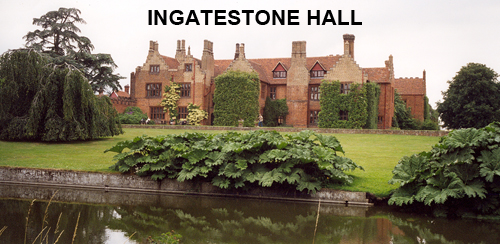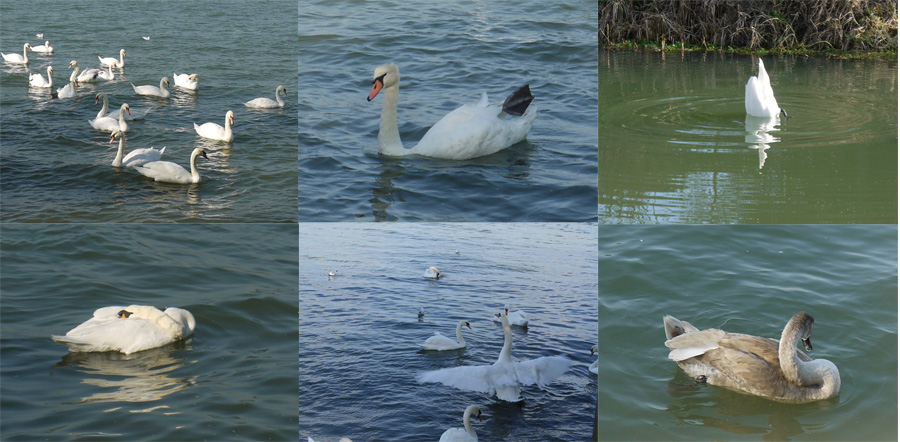




Back to the Essex

- The Royal Connection
- Essex Eats
- Owlbut's Birdwatch
- Essex VIPs
 Essex has a long history of Royal connections. Cunobelinus
(read about him here) ruled from Colchester and this became the capital of Roman Britain,
for a while. Rumour has it that King Canute lived in South Essex for a while. William the Conqueror stayed at Barking Abbey while the Tower of London was being built
and Mary Boleyn, sister of Anne, died at Rochford Hall in 1543. In 1527, well before he divorced Catherine of Aragon, Henry VIII stayed at Hedingham Castle and who
should be with him but Anne Boleyn. Ingatestone Hall, Loughton Hall and St. Osyth Priory all had visits from Elizabeth I and in 1882 Queen Victoria visited High
Beech in the royal forest of Essex and declared it to be "the people's forest". Today it is known as Epping Forest.
Essex has a long history of Royal connections. Cunobelinus
(read about him here) ruled from Colchester and this became the capital of Roman Britain,
for a while. Rumour has it that King Canute lived in South Essex for a while. William the Conqueror stayed at Barking Abbey while the Tower of London was being built
and Mary Boleyn, sister of Anne, died at Rochford Hall in 1543. In 1527, well before he divorced Catherine of Aragon, Henry VIII stayed at Hedingham Castle and who
should be with him but Anne Boleyn. Ingatestone Hall, Loughton Hall and St. Osyth Priory all had visits from Elizabeth I and in 1882 Queen Victoria visited High
Beech in the royal forest of Essex and declared it to be "the people's forest". Today it is known as Epping Forest.
![]() Back to the top
Back to the top
Essex has been famous for certain foods since Roman times. The Romans loved the Oysters that are found around Brightlingsea and
Mersea Island. They even towed them back to Italy behind special boats. Oysters are still farmed there and Owlbut and Richard went out on a oyster fishing boat to
see how the shells are dredged up from the sea. Small ones are put back while the larger ones are then taken to the processing plant where they are cleaned and
washed, before being sold to shops and restaurants around the country.
Essex is also known for jam making in Tiptree, salt from Maldon and yet more shell fish with the famous cockle sheds at Leigh-on-Sea near Southend.
![]() Back to the top
Back to the top
Mistley in Essex is a fantastic place to see swans. I often go out with Richard to photograph the swans at Mistley but, if you
go, do be careful because swans can be quite vicious, especially if they are protecting their chicks. The swans in England are called mute swans. There are five
other types of swans around the world. The mute swan is England's largest bird and one of the heaviest flying birds in the world. Swans are white in colour but the
young ones are grey to begin with and have brown feathers which disappear when they are about two years old. Adults weigh between 8kg and 10kg and have a wingspan of 2.25
metres. They eat underwater plants, as you can see clearly in one of the pictures we took below, and grass and cereal crops. The most famous story about a swan is the "The Ugly Duckling", a fairy tale by the Danish author Hans Christian Andersen. It was published in 1843 and if you haven't read it I suggest you try.
During the reign of Elizabeth I swan meat was regarded as a luxury food and that is why, even today, all mute swans are owned by Queen Elizabeth II.
The reigning monarch has the right to claim ownership of all swans swimming in open waters since the 12th century. Today swans are no longer eaten and are a protected
species. There is an annual event on the River Thames called Swan Upping, where mute swans are rounded up, caught, ringed then released. This allows the swan
population to be monitored.

Seven random people who were born in Essex in the last 100 years:-
Jamie Oliver (Chef), Dame Maggie Smith (Actress), Grayson Perry (Artist), Olly Murs (Singer), Rupert Grint (Actor played Ron
Weasley), the late Rik Mayall (Comedian) and Harry Judd (Drummer with McFly).
![]() Back to the top
Back to the top

